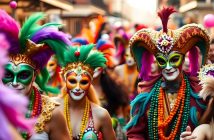If you haven’t had slush shoved down the front of your salopettes, been drenched in ice cold water by a passing snowplough or found yourself late-night ice skating with a seven-foot snowman, you haven’t experienced true hypothermic delirium.
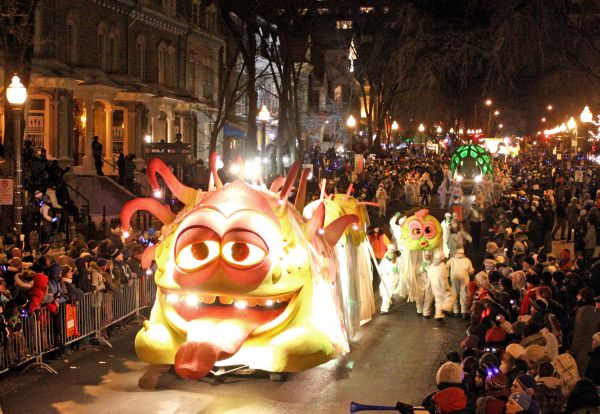
The Quebec Winter Carnival, or Carnaval de Québec (1st-17th February), is the largest winter carnival in the world. That it is the only winter carnival could have a lot to do with this. But, in terms of audience participation, it still ranks third behind the Mardi Gras celebrations in New Orleans and Rio. For seventeen perishing days every year, sixty thousand loonies huddle together in “La Vieille Capitale” for some choral teeth-chattering mass shivering and orchestrated foot-stomping. The hardiest see in the New Year in a hot tub.
It takes a special effort and certain kind of insanity to enjoy yourself in sub-zero temperatures and to revel in freezing fog, but the Quebecoise like to celebrate the cold. They attach great importance to their “Carnaval” which goes back to 1894. It is the highlight of their bitingly cold and horribly inhospitable and unequivocally wintry winter; it is also the third largest revenue-producing event on their calendar. Commercially, the cold is a success in Canada…
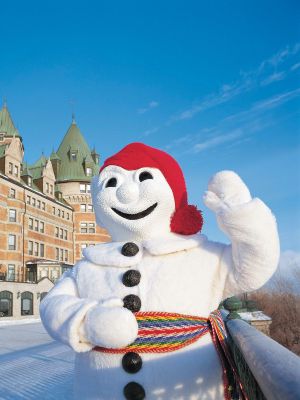 ‘Like our frost?’ a wind-reddened party animal asked me, ‘We have some pretty cute sleet too,’ he added as he threw a snowball playfully my way. It caught me square in the balaclava. Luckily, it didn’t take out my eyes as I was wearing the balaclava the wrong way round.
‘Like our frost?’ a wind-reddened party animal asked me, ‘We have some pretty cute sleet too,’ he added as he threw a snowball playfully my way. It caught me square in the balaclava. Luckily, it didn’t take out my eyes as I was wearing the balaclava the wrong way round.
‘Like a taste of my BeaverTail?’ asked a girl brandishing some cinnamon-coated candy sticks.
‘Our Carnival is the best fun you can have with mittens on!’ the half-woman, half-icicle giggled drunkenly, weaving her addled way off through the snowdrifts and the horse-drawn sleighs.
Quebec in winter tests any man’s “Jingle Bells” tolerance threshold. Just as the Soviet Union used to parade its awesome military might in Red Square so the Canadians seize the chance every January and February to show off their enormous stockpile of red noses, roadside slush and forced joie de vivre. Innumerable fat and insufferably jolly bundles of lurid winter wear line the streets of Quebec’s Old Quarter.
The festivities focus around a giant Ice Palace at the Place du Palais, opposite the parliament building. It claims to be the biggest snow building in the world and is the official residence of the ubiquitous Bonhomme Carnaval, the world’s first and so far only full time professional snowman. He is the spirit of the Carnival and presides at all the events after which he embarks on a worldwide promotion tour. He looks like the Pillsbury Doughboy after a course of growth hormone therapy. His identity is a closely guarded secret. Apparently, it is the greatest honour Quebec confers to ask someone to dress up in a polystyrene snowman costume. You can do ‘Brunch’ with him if you wish.
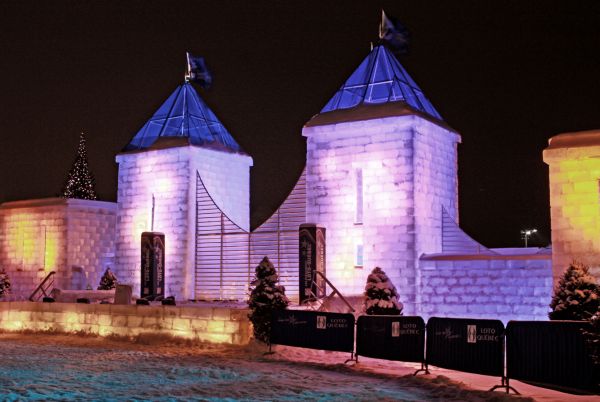
Le Bonhomme (“Happy Man”) is the official starter at the two-mile International Canoe race across the St. Lawrence River. Teams of five masochists row or carry their boats across the ice floes to the other side and back again for a very small cash first prize. There is a noisy snowmobile Grand Prix and a dog sled meet, as well as a snow sculpture exhibition on the 250-acre Fields of Abraham, scenes of the battle between Wolfe and Montcalm in 1759. It is best seen from a zip-line. The Place Desjardins is at the centre of the action and the Place Loto-Quebec holds a nightly rave which is like any other race except people wear more Gore-Tex and stouter shoes.
There are also several balls featuring duchesses (the Quebec version of Malibu Barbies with permafrost hair and inverted nipples) representing Quebec’s seven districts – Courvoisier, Cartier, Champlain, Frontenac, Laval, Levy and Montmorency. The balls are the best thing about the Carnival.
Because they happen inside.
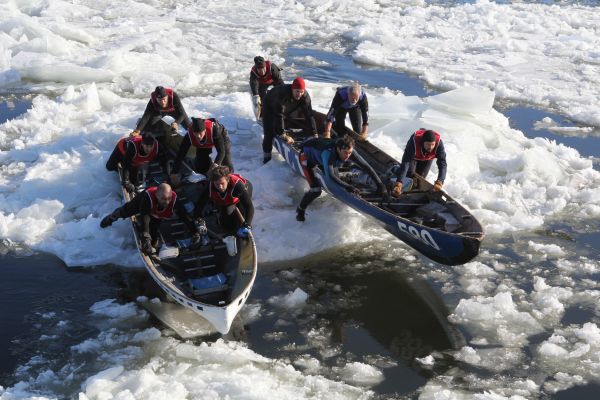
This year there will be a Dog Agility on Ice show as well a flapjack-making contest – apparently inside every Canadian there is a flapjack waiting to come out. The climax of the whole ordeal is a parade consisting of floats which look very much like cars covered in brightly-painted tarpaulins strung with Christmas tree lights. Largely because they are. The organisers call them “allegoric”.
There are lots of marching bands with smoking trombones, fuming flautists, frost-bitten clarinettists and high kicking baton twirlers with goose pimples the size of greengages protruding through their hosiery. By the end of the night La Rue du Petit-Champlain, which claims to be North America’s oldest street, is like any other big city centre but with a lot more very cold people. It’s all great fun and everyone carries de-icer themselves internally with Caribou which is similar to gluhwein but with the kick of snowmobile fuel.
Canadians refuse to let their winters get them down. Some escape to the Caribbean but the hardier souls, once frost-bitten but not shy, choose to stay on and stick it out on top of bar stools, offering extra large snowmen drinks and inviting passers-by to put out their tongues to sample the local beaver.



